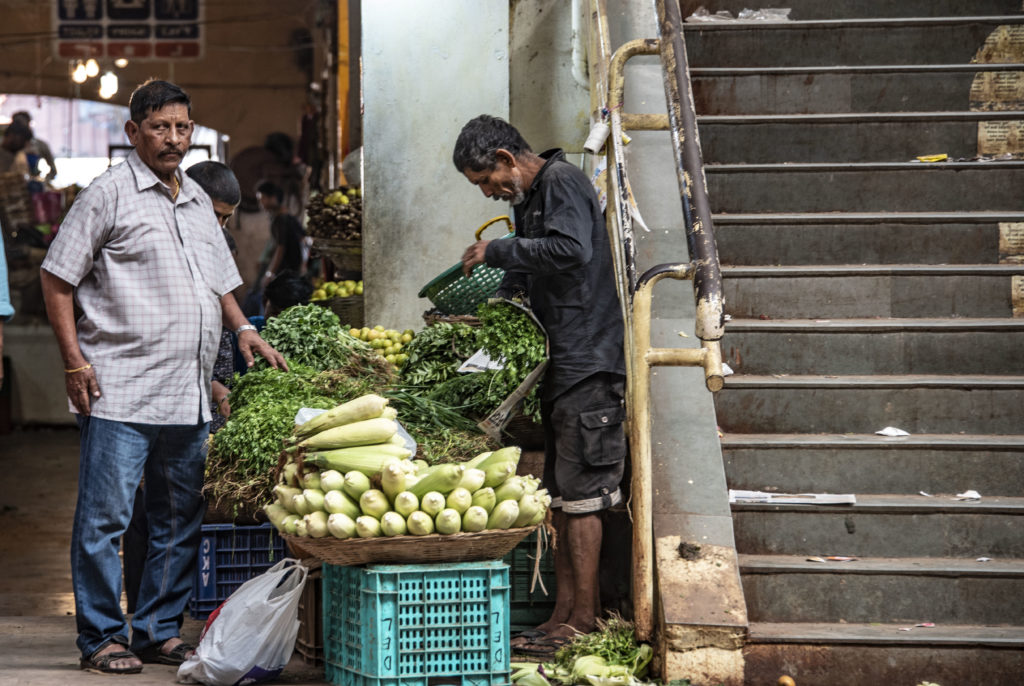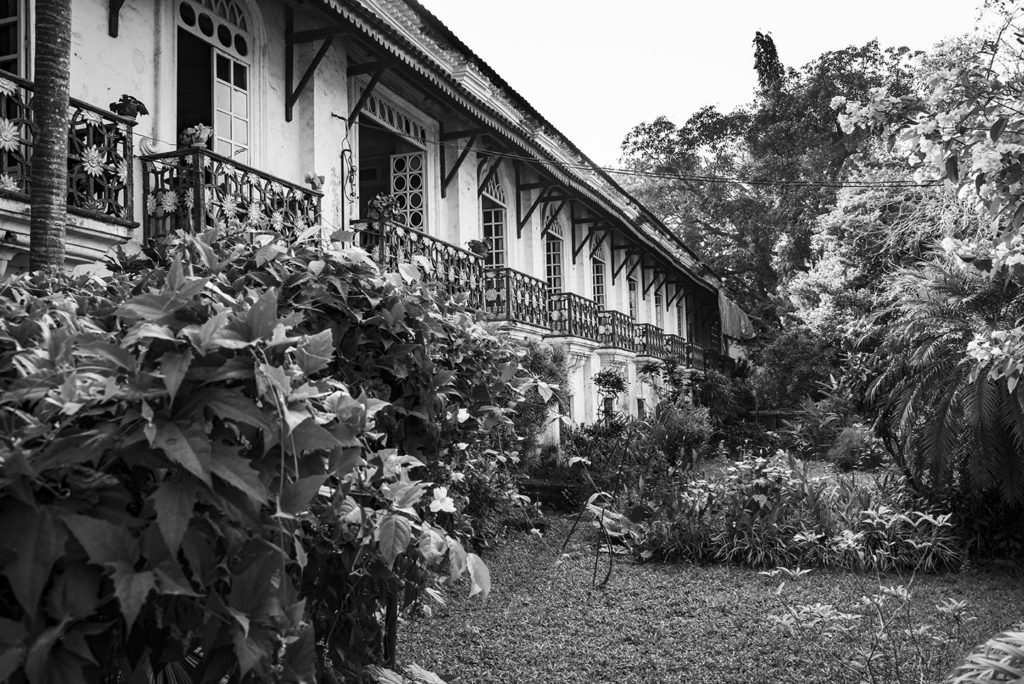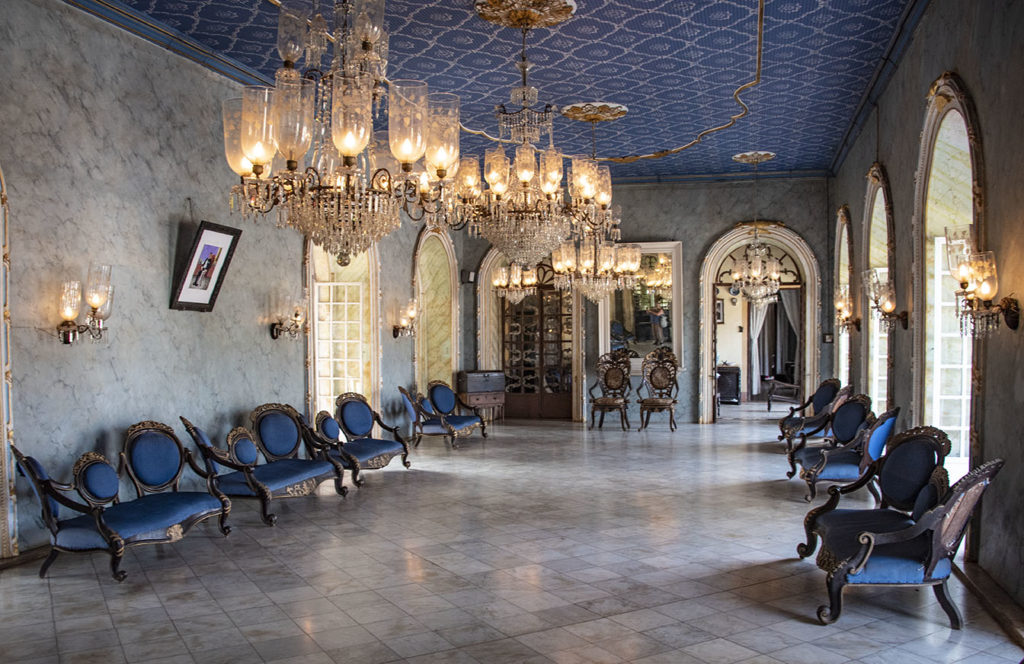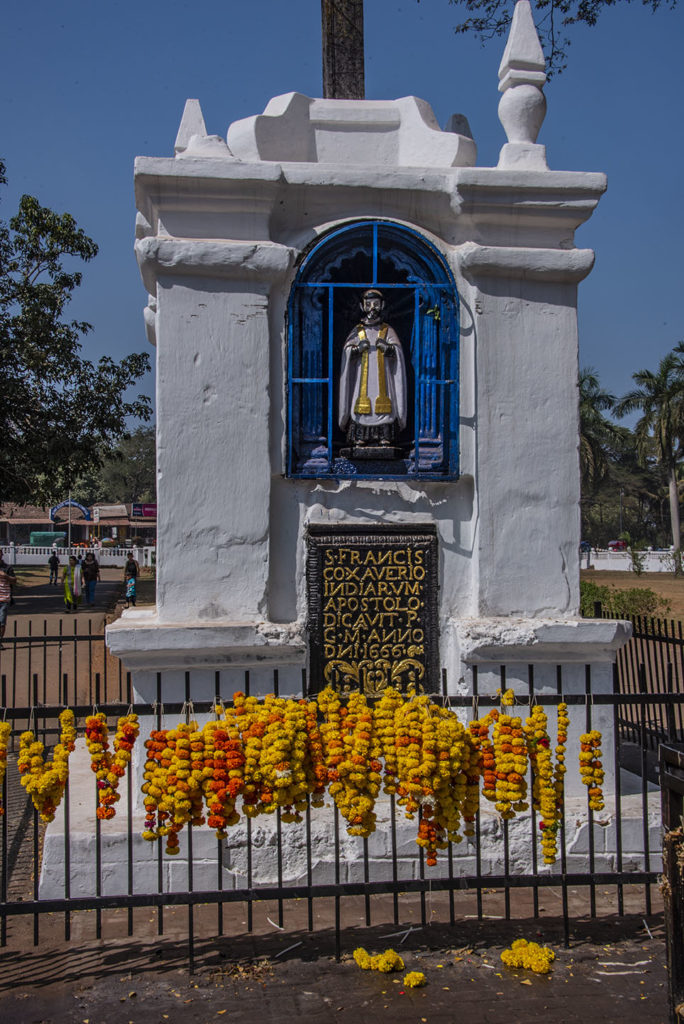Goin’ Nowhere in Goa
We’ve been in Goa for three days and I am really not sure what to tell you other than my impressions of the place have all changed. First of all, I have to admit a certain ignorance of Goa. I knew it had been a Portuguese holding (until 1961) and I knew it had a lot of history in the spice trade, first trading with the Arabs, and then, after Vasco de Gama circumnavigated Africa, with the Portuguese and Europeans. I had even realized that Goa was a state in Southern India.

What I didn’t realize was that there is no city named Goa. Instead the main commercial area is called Vasco de Gama, and the heart of the state is a small city called Panaji. There is Old Goa, but it is mainly a park of lawns set amongst the trees filled with –count ‘em—four churches/cathedrals. We wandered Old Goa in the heat of the day amongst too many tourists. I ducked out to go down to the river (I’m not a huge cathedral fan) and then wandered past a lovely old archway that had once been the entry to the Sultan’s Palace before the Portuguese arrived. From Old Goa we visited Panaji which, unlike the cathedrals, is a bustling town where people live and frequent a vibrant market for fish caught from the river and the ocean, vegetables and stacks of fruit and kaju (cashew) vendors who also sell almonds, pistachios and dried fruit. Yum. There are plenty of small market stalls selling everything from the ubiquitous plastic shoe or thong, to caskets and undertaker services.

The neighbourhoods are old here and full of cock-eyed streets lined with brightly colored houses. We drove through to a scenic point that wasn’t that scenic and then went back to our hotel. I’d intended to return the next day to photograph the lovely streets, but the next day we decided to avoid the heat and the hour+ drive to Panaji. So instead we arranged to visit a couple of old Goan mansions closer to Colva (the beach town where we were staying.)

Turns out it was a treat. The Bragancia house has to be Olympic sized figure skating rink in length. It has lovely Juliet balconies lining the front and the place, though showing its approximate 250 years of age, is gently being restored by the owners who are direct descendants of the Bragancias. One of the Bragancia sons toured us around a blue painted ballroom and lovely gallery filled with rosewood furniture, chandeliers, paintings and portraits, and a pair of chairs that were a gift from the Portuguese king. There was even a pair of palanquins used to carry the husband and wife when they left the house. The family was Goan, but were wealthy landowners and were actually gifted with a coat of arms from Portugal.

The second home, the Fernandes House was more run down, but far more fun. Again, the home is still owned by the Fernandes family and the youngest son, Ranjeev toured us around. He had an infectious enthusiasm for his home, that had a similar design to Bragancia though it was about half the size in length. The fun side was Ranjeev pointing out old bullet holes in the walls and taking us through a secret passage that led from a ladies dressing room to the basement and out to the river so the family could escape attack. It was lovely and sad and I donated 500 rupees to help the restoration cause.
From there we visited Chandagahr (sic) hill and the temple at the top. The hazy air prevented any views of the ocean or the old mansions at the foot of the hill, but it was cool and breezy and the sun was setting. Back at the foot of the hill the green rice paddies glimmered between the trees in the amber air.
The other thing I learned about Goa is that I can’t figure it out. I didn’t see any thriving commercial centre like in Chennai or Mysuru. Instead, the 115,000 people of Panaji live sleepily amongst the trees. So did the people around the beach town of Colva and in the city around the main train station. I kept wondering whether Goa was sinking into forest dotage, or just growing out of the jungle foliage. I still haven’t figured it out, but last night driving to the train station I settled on syncretisation. The animistic tribes held Goa first and this was ploughed under by Hindu kings who accepted local practices, but placed their own beliefs above the old religions. The Islamic sultans who destroyed the Hindu empires did much the same, practicing tolerance of Hindu worshipers. And then the Portuguese came and Catholicism. So now Goa is largely a Christian place with cathedrals so frequent you could trip over them though Muslims and Hindus still are here. There are convent schools and places of education dedicated to Jesus etc. so I suppose you could say that Christianity is the latest ‘winner’.
But not totally.
Last night as we rode to the train station alongside the road there was Hindu shrine with garlands draped over the god image and a brass bell that was rung and a small fire to bring light into the world. A hundred feet farther back down the road we’d passed a non-descript stone Christian cross draped in similar floral garlands so that it appears that far older cultural practices are being woven into Goan Christianity today.

Postscript:
My favorite sign from my time in Goa: All Goan Toddy Tappers Association. It doesn’t refer to tap dancing, but to tapping the toddy palms to get the sweetness of their blossoms. From this comes chaggery sugar and a powerful liquer. That was something else I learned about Goa in my short stay and non-exploration—it’s the most liberal minded place about alcohol of any of the places we’ve visited in India.









